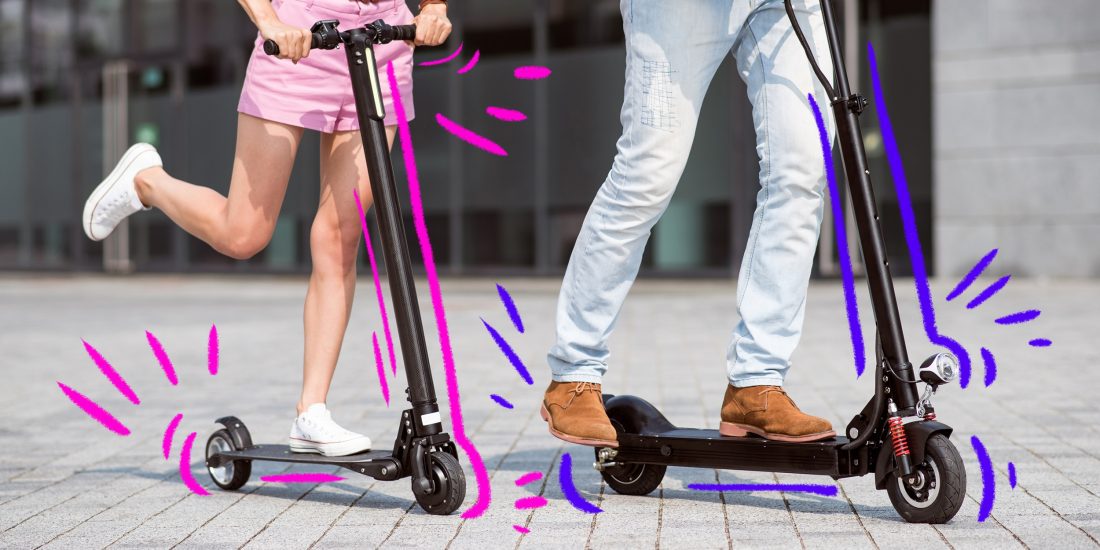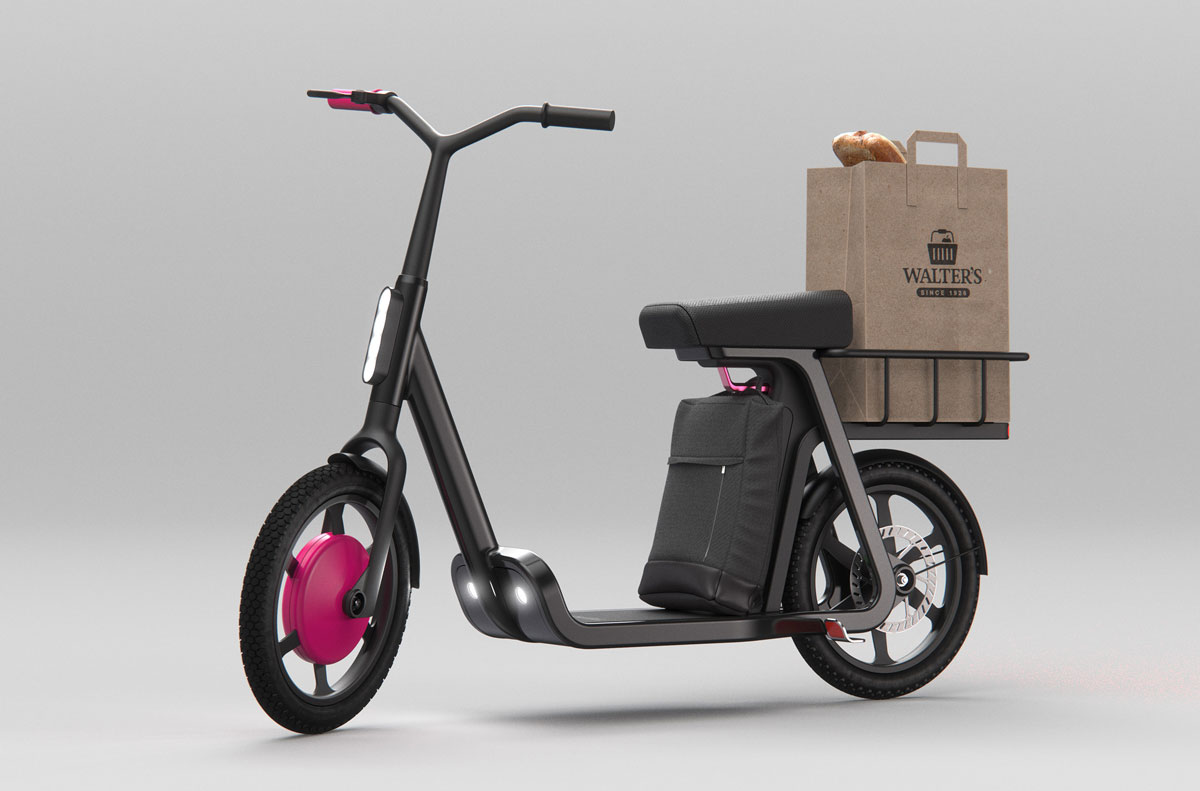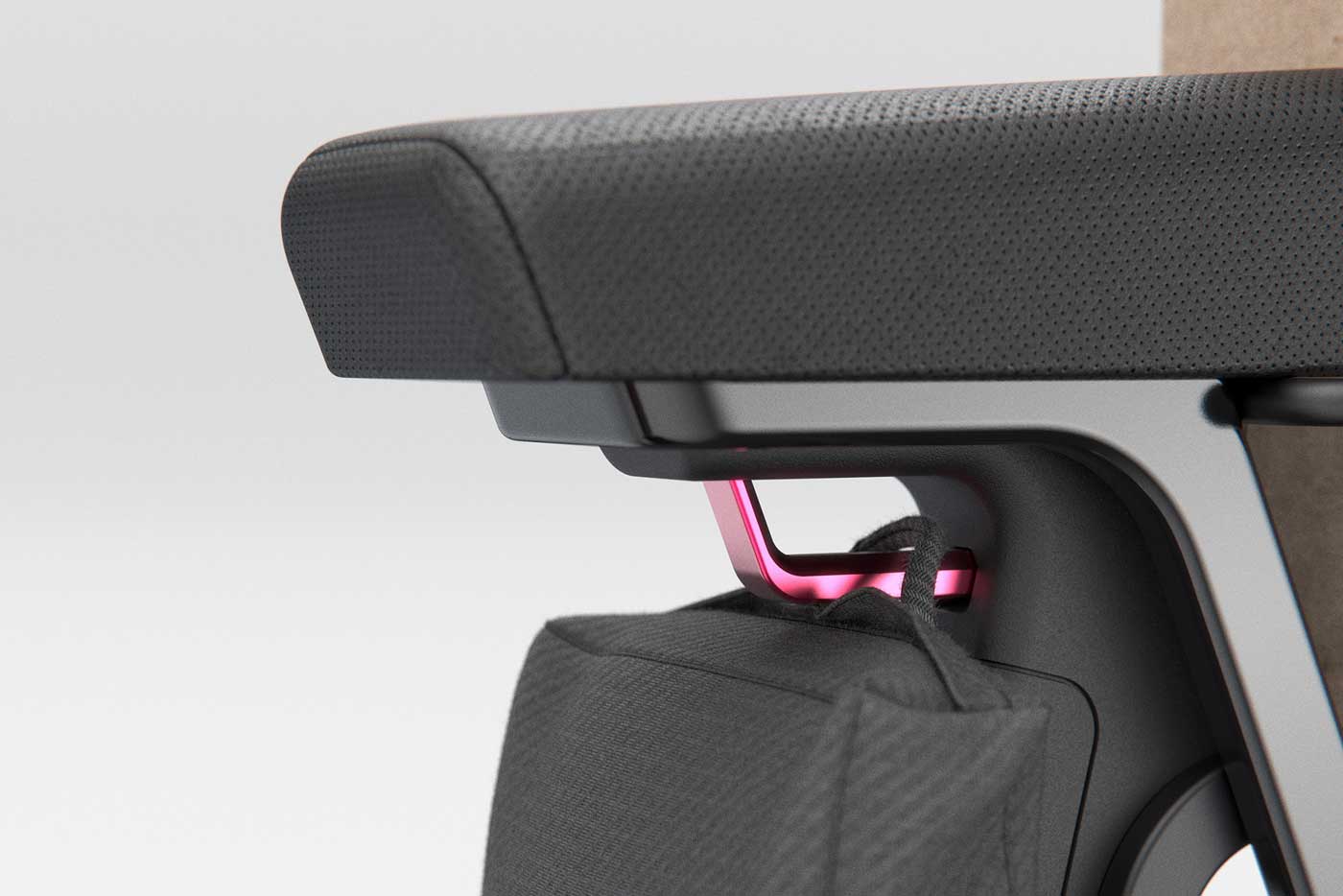
Self-service: they envision the ideal electric scooter
Content

Designer Joshua Marusca and “futurist” Devin Liddell, who at design firm Teague are thinking about smarter applications of the objects of tomorrow, recently published an interesting article on the construction of electric scooters. Their observation: They are poorly designed. With a few clever suggestions, they offer simple and effective improvements. meditate.
Thinking about the perfect scooter – a challenge?
Electric scooters have taken a special place in the so-called "last mile" urban mobility, which brings us closer to our destination. In this article published last month, the two Teague designers return to the downsides of these increasingly used electric vehicles, especially when used together. Their upright driving position poses a safety hazard and their random positioning on sidewalks makes it difficult for pedestrians to move. The authors also note the inequality in access to these modes of transport for all people who do not have a smartphone; shared scooters are still available through a mobile application.
“Taken together, these issues underscore a fundamental truth: the electric scooters we use today are not the vehicles that cities would design for the daily commute of their residents.”, indicate Maruska and Liddell. “In fact, the ideal electric scooter for general use will perform and look completely different. “
Seate passengers for a safer journey
First observation: the vertical position does not give the driver the opportunity to adequately respond in the event of interference. If he has to brake quickly, he may fall off the scooter and get injured. The designers at Teague also note the social problem of this standing position, which puts the driver above pedestrians: "Psychologically, this creates an artificial hierarchy in which scooter drivers are 'above' pedestrians, much like SUVs dominate small cars and drivers tend to bypass pedestrians."
Thus, the solution could be a versatile electric scooter with large wheels and a seated position, which will provide greater comfort and safety for both drivers and pedestrians. Plus, it doesn't give the impression that we took the scooter from our 8 year old!
Solve your bag problem once and for all
Joshua Marusca and Devin Liddell noticed this: “Storing packages is a challenge for micromobility. “. Lime, Bolt, and the rest of the Birds have no way to fold their belongings, and riding an electric scooter with a backpack often results in off-balance.
Like shared bikes, why not include a scooter storage basket? Teague's article goes deeper into this idea, offering an elegant basket on the back of vehicles and a bag hook under the seat. A clever solution that could even be deepened: “If a bag lock is built into the footrest, the rider can only end the ride after unhooking the bag and engaging the footrest. This ensures no bags are left behind and encourages the rider to park the scooter upright. “

Tackling inequalities in scooter access
In addition to speculating about the design of future electric scooters, the authors of the article question the economic model of these shared parks. Why not integrate them into the city transport card system? “This will allow for more equitable access, including for people who do not have a bank account or mobile phone. Indeed, municipal services should be accessible to everyone, while the availability of application-based services provided by tech and mobile startups tends to be much more limited. ”
These changes may seem minimal, but they will undoubtedly initiate a profound transformation of soft urban mobility, safer and more open to all.
